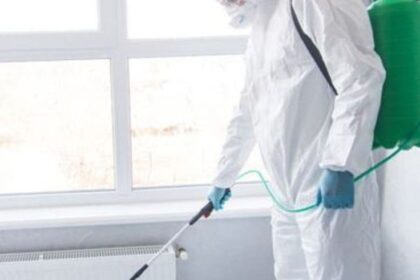Vitiligo, the autoimmune condition causing loss of skin pigment, presents not just a physical and emotional challenge, but also a significant financial consideration for those seeking treatment in Malaysia. While the condition itself isn’t life-threatening, the desire to manage its progression, achieve repigmentation, and improve appearance often involves a journey with varying price tags. Navigating the cost of vitiligo treatment requires understanding the spectrum of available options, the stark differences between public and private healthcare, and the often-limited role of insurance. This article aims to demystify the financial aspects of vitiligo treatment in Malaysia, empowering patients to make informed decisions.

The Multifaceted Cost Burden
Vitiligo treatment costs extend far beyond the price of a single cream or procedure. Patients often face:
-
Diagnosis & Consultations: Initial diagnosis and ongoing specialist visits.
-
Treatment Modalities: The core expenses of medications, light therapy, or surgery.
-
Maintenance & Support: Sunscreens, camouflage products, potential long-term medication use, and psychosocial support.
-
Indirect Costs: Transportation (especially for frequent phototherapy), time off work for appointments, and potential childcare.
Breaking Down Treatment Costs in the Malaysian Context
Costs vary dramatically based on the treatment type, setting (public vs. private), location, and the severity/extent of vitiligo.
-
Medical Consultations:
-
Public Sector (Government Hospitals/Clinics):
-
Klinik Kesihatan (GP): Minimal fee (often RM1-RM5 registration). May refer to hospital specialists.
-
Hospital Specialist (Dermatology): Heavily subsidized. Consultation fees typically range from RM5 to RM30 after referral. However, significant waiting times (months) are common for non-urgent cases.
-
-
Private Sector:
-
General Practitioner (GP): RM30 – RM80+.
-
Dermatologist (Specialist): RM100 – RM300+ per consultation, potentially higher for renowned specialists in major cities.
-
-
-
Topical Treatments (Creams/Ointments): Costs are per tube and vary by brand, size, and pharmacy.
-
Public Sector: Heavily subsidized.
-
Basic Topical Corticosteroids: Often < RM10 – RM20.
-
Topical Calcineurin Inhibitors (TCIs – Tacrolimus/Pimecrolimus): Increasingly available in hospital formularies at subsidized rates (RM20 – RM60), but access can be inconsistent.
-
-
Private Sector:
-
Topical Corticosteroids: RM20 – RM100+.
-
Topical Calcineurin Inhibitors (Protopic, Elidel): RM100 – RM350+ (15g-30g tubes).
-
Topical JAK Inhibitor (Ruxolitinib – Opzelura): RM800 – RM1,500+ (60g tube). The newest and most expensive topical.
-
Usage Note: Tubes last varying durations depending on patch size and application frequency (e.g., Opzelura might last 1-2 months for limited areas).
-
-
-
Phototherapy (Light Treatment):
-
Public Sector (Major Govt Hospitals): The most affordable access point.
-
Narrowband UVB (NB-UVB – Full Body Cabin): Highly subsidized, typically RM5 – RM30 per session. Requires 2-3 sessions per week for 6 months to over a year.
-
-
Private Sector:
-
Narrowband UVB (Full Body): RM50 – RM150+ per session.
-
Excimer Laser/Light (308nm – Targeted): RM200 – RM500+ per session/per patch. More expensive per session but targets specific areas, potentially requiring fewer sessions overall than NB-UVB for localized vitiligo.
-
-
-
Systemic Medications (Oral):
-
Used for rapidly progressive or extensive vitiligo.
-
Public Sector: May be prescribed (e.g., oral mini-pulse steroids) at minimal cost if available in the hospital formulary.
-
Private Sector:
-
Oral Steroids (e.g., Dexamethasone mini-pulse): Relatively low cost (RM10 – RM50/month).
-
Oral JAK Inhibitors (e.g., Tofacitinib, Ritlecitinib – Off-label): Very high cost (RM1,500 – RM4,000+ per month), plus significant costs for mandatory blood monitoring.
-
-
-
Surgical Therapies (For Stable Vitiligo):
-
Public Sector: Available in select major hospitals at subsidized rates, but waiting lists can be long. Exact costs variable but significantly lower than private.
-
Private Sector:
-
Autologous Skin Grafting/Suction Blister Grafting: RM2,000 – RM8,000+ depending on area size and complexity.
-
Non-Cultured Epidermal Cell Suspension (NCES/ReCell®): RM8,000 – RM20,000+ (significantly influenced by the size of the treated area). Considered one of the most advanced and effective surgical options, but also the most expensive.
-
-
-
Depigmentation Therapy:
-
Rarely used (for very extensive vitiligo). Cost of monobenzyl ether of hydroquinone cream and ongoing follow-up. Private sector cost.
-
-
Essential Non-Prescription Costs:
-
High-SPF Broad Spectrum Sunscreen: RM50 – RM200+ per bottle. A non-negotiable, lifelong daily expense for all vitiligo patients. Consumption is high as depigmented skin needs constant protection.
-
Cosmetic Camouflage: Quality waterproof concealers (e.g., Dermablend, Covermark) cost RM100 – RM300+ per unit.
-
The Public vs. Private Divide: Access and Affordability
-
Public Healthcare: Offers critical affordability, especially for consultations and NB-UVB. Essential for low-income patients. However, limitations include long waiting times for specialists and phototherapy, inconsistent access to newer topicals (TCIs, JAK inhibitors) and advanced surgeries, and limited appointment flexibility.
-
Private Healthcare: Provides faster access, wider choice of treatments (including the newest innovations like JAK inhibitors and ReCell), greater flexibility, and more personalized time with specialists. The primary drawback is cost, which can quickly become prohibitive, especially for long-term phototherapy, expensive topicals, or surgery.
The Insurance Conundrum
This is often the most significant financial hurdle:
-
Cosmetic Exclusion: Most standard health insurance plans in Malaysia explicitly exclude coverage for vitiligo treatments, classifying them as “cosmetic” or “aesthetic.”
-
Possible Exceptions (Rare & Conditional):
-
Some comprehensive plans might offer partial coverage if the dermatologist provides robust documentation demonstrating the treatment is medically necessary due to severe functional impairment (e.g., extreme photosensitivity leading to burns) or significant, documented psychological distress (requiring psychologist/psychiatrist reports).
-
Coverage, if any, is far more likely for phototherapy or essential topical steroids than for newer biologics (JAK inhibitors) or surgery.
-
-
Reality Check: Patients should assume no coverage unless explicitly confirmed in writing by their insurer after pre-authorization. Always:
-
Scrutinize your policy wording.
-
Discuss potential claims with your insurer before starting expensive treatments.
-
Work with your dermatologist on necessary documentation.
-
State Initiatives: A Glimmer of Subsidy
Recognizing the burden, some Malaysian states offer support:
-
Selangor: The PeKa B40 scheme provides free health screenings and includes coverage for vitiligo treatment (consultations, medications like TCIs, phototherapy) for eligible B40 residents at participating facilities.
-
Others: States like Penang and Sarawak have occasionally offered subsidized programs or initiatives. Check with your local state health department or Klinik Kesihatan for current programs.
Managing Costs: Practical Strategies
-
Start with Public Sector: Utilize government hospitals/clinics for diagnosis, basic topicals (steroids), and subsidized NB-UVB if accessible. Be prepared for waits.
-
Explore State Schemes: If eligible (e.g., B40 in Selangor), utilize PeKa B40 or similar programs.
-
Prioritize Treatments: Discuss cost-effectiveness with your dermatologist. Focus on stabilizing first. NB-UVB is often the most cost-effective effective treatment in the public sector.
-
Combine Wisely: Using a moderately priced topical (like a TCI) consistently alongside phototherapy can be more effective and potentially more cost-efficient long-term than sporadic use of very expensive topicals alone.
-
Sun Protection is Non-Negotiable: While sunscreen costs add up, preventing sunburn is crucial and avoids additional complications. Look for promotions or bulk buys on reputable brands.
-
Seek Support: Connect with patient groups (Vitiligo Support Malaysia) for practical tips and emotional support.
-
Discuss Generic Options: Ask about generic versions of TCIs (Tacrolimus), which may be slightly cheaper than branded Protopic.
-
Be Realistic: Understand that complete repigmentation, especially on hands/feet, is challenging. Focus on achievable goals within your budget.
Conclusion: Navigating the Financial Journey
The cost of vitiligo treatment in Malaysia spans a vast spectrum, from highly subsidized basic care in government hospitals to the premium prices of cutting-edge biologics and surgery in the private sector. The near-universal insurance exclusion adds a significant layer of financial complexity. Understanding this landscape – the price points, the public-private trade-offs, and the realities of insurance – is crucial for patients and families. By leveraging public services, exploring state subsidies, prioritizing treatments strategically, and having open conversations with dermatologists about affordability, individuals with vitiligo can find pathways to manage their condition without facing insurmountable financial strain. Continued advocacy for broader insurance recognition and inclusion of effective vitiligo treatments in national health programs remains vital for equitable access in the future.
5 FAQs on the Cost of Vitiligo Treatment in Malaysia
-
Q: How much does vitiligo treatment typically cost in Malaysia?
A: There is no single “typical” cost, as it varies enormously:-
Public Sector: Can be very affordable. Consultations: RM5-RM30; Basic Topical Steroids: <RM20; NB-UVB Phototherapy: RM5-RM30/session. Total costs can be kept low, but waiting times are long.
-
Private Sector: Significantly higher. Dermatologist Consultations: RM100-300+; Topical Creams (TCIs): RM100-350+/tube, (JAK inhibitors): RM800-1500+/tube; NB-UVB: RM50-150+/session; Excimer Laser: RM200-500+/session; Surgery (ReCell): RM8,000-20,000+. Costs escalate quickly with advanced/long-term treatments.
-
Essentials: High-SPF Sunscreen: RM50-200+/bottle (ongoing cost).
-
-
Q: Is vitiligo treatment covered by health insurance in Malaysia?
A: Generally, NO. Most standard health insurance plans explicitly exclude vitiligo treatments, classifying them as “cosmetic” or “aesthetic.” Possible, rare exceptions:-
Some comprehensive plans might offer partial coverage if the dermatologist provides strong documentation proving severe functional impairment (e.g., disabling photosensitivity) or significant, diagnosed psychological distress.
-
Coverage, if any, is more likely for phototherapy or essential steroids than expensive biologics or surgery.
-
Crucially: Always check your specific policy wording and get pre-authorization in writing before assuming coverage. Assume exclusion unless confirmed otherwise.
-
-
Q: What’s the most expensive vitiligo treatment available in Malaysia?
A: Costs depend on duration and area, but the highest individual item costs are typically:-
Oral JAK Inhibitors (Off-label use – e.g., Tofacitinib): RM1,500 – RM4,000+ per month, plus monitoring costs.
-
Surgical Treatment (Non-Cultured Epidermal Cell Suspension – ReCell®): RM8,000 – RM20,000+ per procedure (cost heavily depends on area size).
-
Topical JAK Inhibitor (Opzelura – Ruxolitinib cream): RM800 – RM1,500+ per tube (60g).
-
Long-term Private Phototherapy: While per-session costs (RM50-500+) may seem lower, the need for 2-3 sessions per week for many months can lead to total costs of thousands of Ringgit.
-
-
Q: Are there any government programs that help with the cost of vitiligo treatment?
A: Yes, primarily:-
Public Hospitals: Offer heavily subsidized consultations, basic topicals, and NB-UVB phototherapy. This is the most significant cost-saving avenue.
-
State Initiatives:
-
Selangor PeKa B40: Provides free health screenings and treatment (including vitiligo – consultations, medications like TCIs, phototherapy) for eligible B40 residents at participating facilities.
-
Penang/Sarawak: Have offered subsidized schemes historically – check current availability with local health departments or Klinik Kesihatan.
-
-
Accessing public care usually requires patience due to waiting times.
-
-
Q: I can’t afford private dermatology or expensive creams. What are my most affordable effective options?
A: Prioritize Public Sector Resources:-
Get Referred: Visit a Klinik Kesihatan (low cost) and get a referral to the dermatology department of a major government hospital.
-
Utilize Public NB-UVB: This is the most cost-effective effective treatment available publicly (RM5-30/session). Commit to the schedule.
-
Public Prescriptions: Obtain basic topical corticosteroids (<RM20) or inquire about subsidized TCIs if available at that hospital.
-
Check State Schemes: If you are B40 in Selangor, apply for PeKa B40 coverage.
-
Sun Protection: Invest in high-SPF sunscreen (look for deals/bulk) – this is essential regardless of other treatments and prevents costly complications.
-
Discuss Generic Tacrolimus: If prescribed TCIs privately, ask if a generic version is available (may be slightly cheaper than Protopic).
Focus on stabilization and treating responsive areas (face/neck) first within the public system.
-



